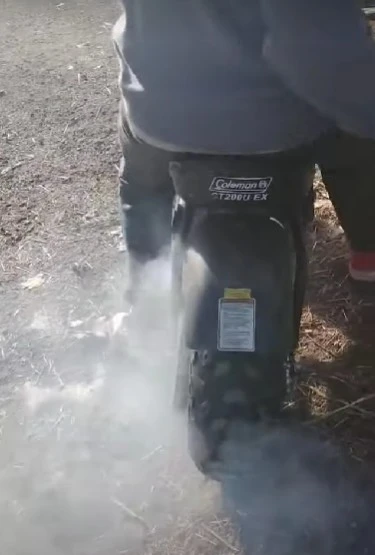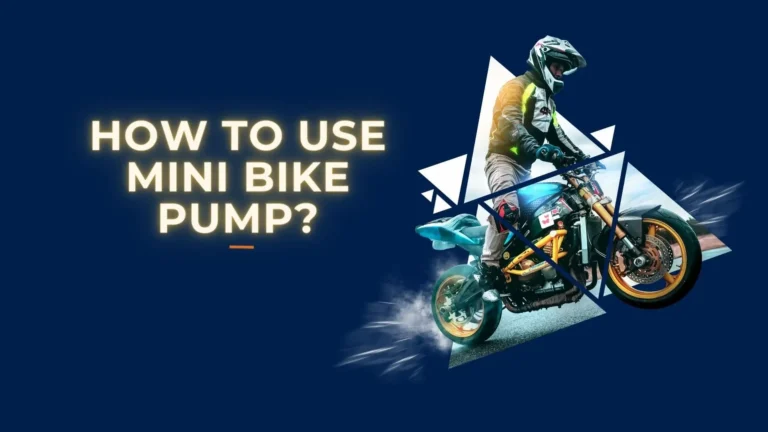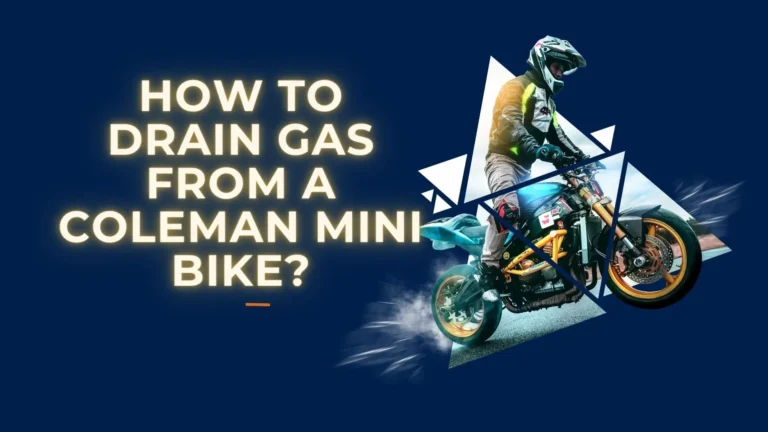Why Does My Mini Bike Smoke?
A mini bike smokes when engine oil or fuel leaks past worn internal seals and rings into the combustion chamber or exhaust. Common causes include damaged piston rings, cylinders, valves, and head gaskets needing repair or rebuild to prevent gas and oil mixing where they should not.
Lots of dark smoke from the exhaust pipe means possible engine issues. Finding the cause is step one to fix it. A little smoke when starting is ok. But constant gray or black smoke is a problem.
This guide shows common reasons for smoke in mini bikes. It talks about easy things to check, maintenance to help avoid trouble, when the shop should fix it, and how to stop smoke before big repairs. Taking care of issues fast keeps mini bikes running great.
Oil and gas in the exhaust makes damage spread quick. Learning what makes the smoke, checking for worn parts, and fixing issues early keeps mini bikes at peak.
Key Takeaways
- Consistent dark smoke from the exhaust indicates engine problems in mini bikes. Finding the root cause is the first step before attempting repairs.
- A small amount of smoke when starting up is normal, but steady gray or black smoke points to issues.
- Oil and fuel leaks allowing unburnt gases into the exhaust can quickly cause damage if not fixed.
- Common inspections like oil tests, spark plug checks, compression tests can help diagnose root causes.
- Regular maintenance like oil changes, air filter replacements, carb tuning helps prevent smoke-causing wear and tear.
- Seeking professional diagnosis may be needed for complex problems requiring engine rebuild or internal part replacements.
- Smoke can be eliminated through repairs like installing new piston rings, gaskets, seals targeted at identified failures.
- Catching and addressing root causes early on prevents small problems from becoming major with prolonged operation.
- Proactive preventative maintenance is key for minimizing deterioration and keeping mini bikes smoke-free for years.
What Smoke is Normal or Not?

Seeing some smoke when first starting your mini bike is normal, especially on cooler days. This happens as oil gets hot and burns off residues inside the engine. But the smoke should go away once warm.
Constant gray or black smoke pouring from the exhaust is a clue that something is wrong inside. This often means wear and tear to parts like piston rings or valve seals.
Oil and fuel leaks let unburnt gases pass into the exhaust. This causes emission of sooty smoke. Without fixing the leaks, long-term damage can occur fast.
Finding Out Why It’s Smoking
Knowing the root reason your mini bike is smoking is key before trying to fix it. Here are common checks to diagnose the problem:
Oil Testing
- Monitor oil level over full tank to check if too much oil is burning
- Points to worn piston rings or cylinders
- Look for metal flakes that signal internal part wear
Spark Plug Inspection
- Check for oil deposits and coolant staining
- Means oil/coolant is leaking past rings/valves
- Assess spark plug color and shape
Compression Test
- Helps identify air leaks
- Cylinder, piston ring, valve damage
Inspect Key Components
- Air filter, carburetor for clogs
- Head gasket, cylinder heads for cracks/leaks
- Valves for proper sealing
Start with easier inspections, then compression/oil tests if needed. This can pinpoint the culprit without any guesswork.
Caring for Your Mini Bike Right
Basic maintenance keeps mini bikes from wearing out quickly and seeing smoke issues.
Here are tips to properly care for it:
- Change the engine oil and filter as often as your manual says. Clean or replace dirty air filters when they look covered in dust and dirt. This allows enough air into the engine to burn the fuel nicely.
- Always use the gasoline your manual recommends for best performance. Poor quality gas can make the engine run hot and leak oil into places it shouldn’t.
- Regularly check tubes, hoses, gaskets, and o-ring seals when washing your mini bike. Fix any cracks or leaks quickly to prevent oil and gas from burning where they shouldn’t, which makes smoke.
- Sometimes tuning the carburetor helps eliminate smoke. Adjust idle speeds and fuel mixtures slowly while test driving until the engine runs cleanly and smoothly. Proper tuning prevents choking with too much gas.
- It’s also smart to sometimes let your engine speed vary up and down while riding instead of holding the throttle wide open all the time. This helps prevent parts from wearing out too fast, which can lead to oil leaks and smoke issues over time with excessive use.
When To Seek Repair Shop Help
Can’t resolve the smoke cause yourself? Take it in for professional diagnosis if:
- Basic checks like oil tests, inspections and tuning attempts don’t reveal issues
- Compression tests or other self-troubleshooting steps don’t pinpoint where oil/gas leaks happen
- Potential causes may lie in complex internal failures:
- Cracked piston rings
- Warped cylinder walls
- Sticking/burnt valves
- Damaged cylinder head gasket letting oil into combustion chamber
- Major repair work may be required:
- Engine tear down to access internals
- Rebuilding top end with new piston rings
- Replacing leaky gaskets or seals
- Repairing damaged cylinder walls and valve seats
Seeking professional assessment is wise if you lack specialized tools, skills and workspace for major engine service. Continuing to ride with unsolved smoke causes further wear. Let mechanics tackle root causes through thorough diagnostics and rebuilds.
How to Fix and Prevent Smoking
Once the root cause is found, targeted fixes can resolve smoke and restore peak performance. Common solutions include:
Engine Rebuilds
- Mechanics disassemble engines to rebuild worn components
- Install new piston rings, seal damaged cylinders or valves
- Precision machine work returns tight tolerances
Replace Failed Parts
- Swap leaky head gaskets, compromised oil seals
- Substitute restricted air filters or fuel injectors
- Install updated carburetors if originals can’t be tuned
Tune For Clean Runs
- Adjust air/fuel ratios via carburetor
- Clean clogged jets; modify mixing if needed
- Ensure changes yield smooth acceleration
Cooling System Repairs
- Fix loose hoses and fittings
- Test water pump, thermostat function
- Restore airflow over cylinders
Completing the right repairs tailored to diagnosed causes restores these motors to factory specs. Technicians can recommend best fix paths if causes prove complex. Addressing issues promptly is key to avoiding worse damage.
Remember These Things
Seeing smoke a lot means your mini bike has problems. Finding why it happens is step one before fixing it.
Inspect the parts inside. Check compression and oil burn. These spots where gas or oil is getting through into the exhaust areas.
Big fixes may be needed if very worn – like taking apart the engine to replace rings, valves, gaskets that have holes or leaks.
It costs more to have complex repairs done by a shop. But catching issues early keeps small problems from becoming giant.
Doing maintenance like changing oil, tuning the carburetor, using good gas prevents wear that causes smoke. Caring for your mini bike properly keeps it running many years.








